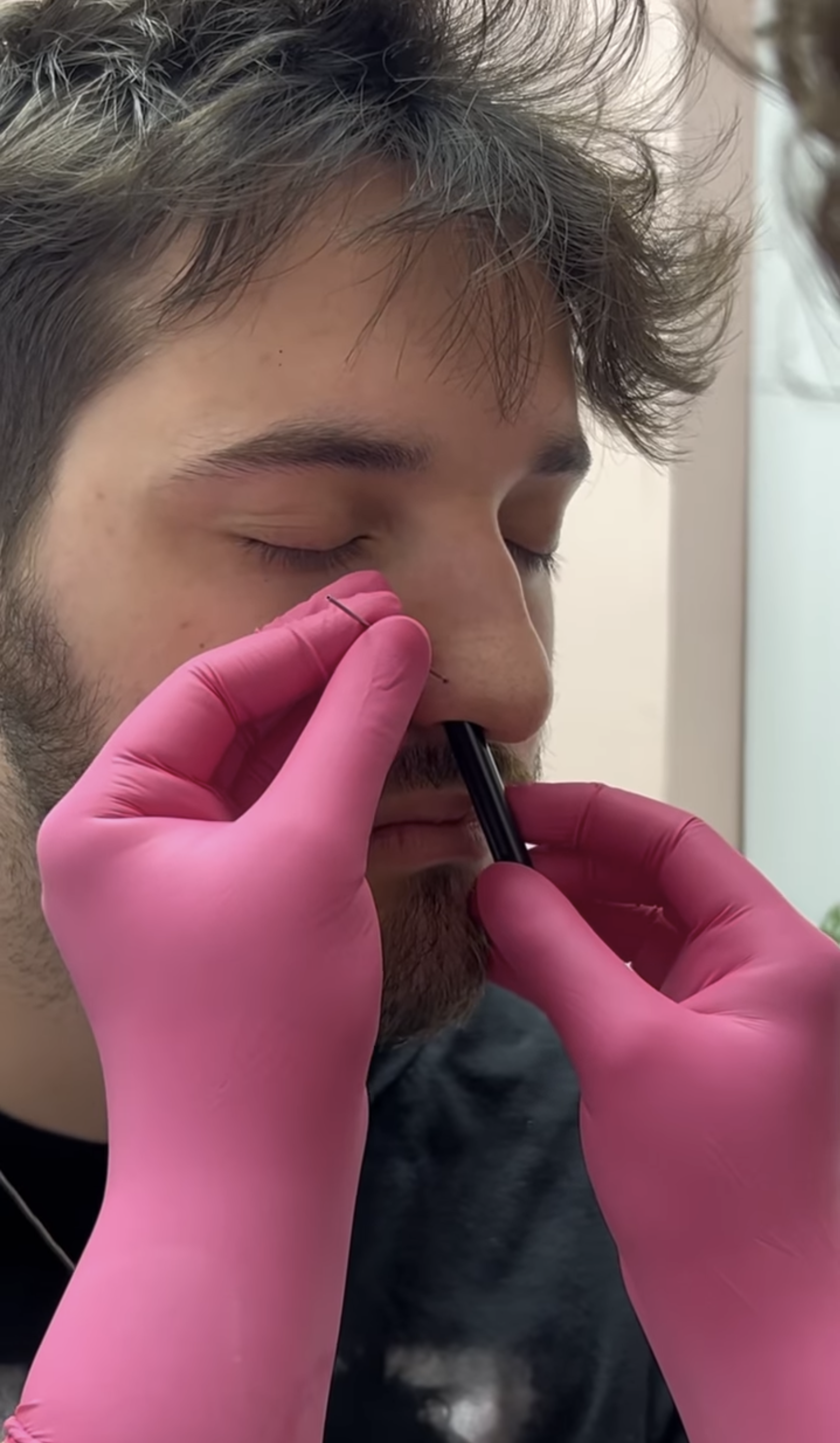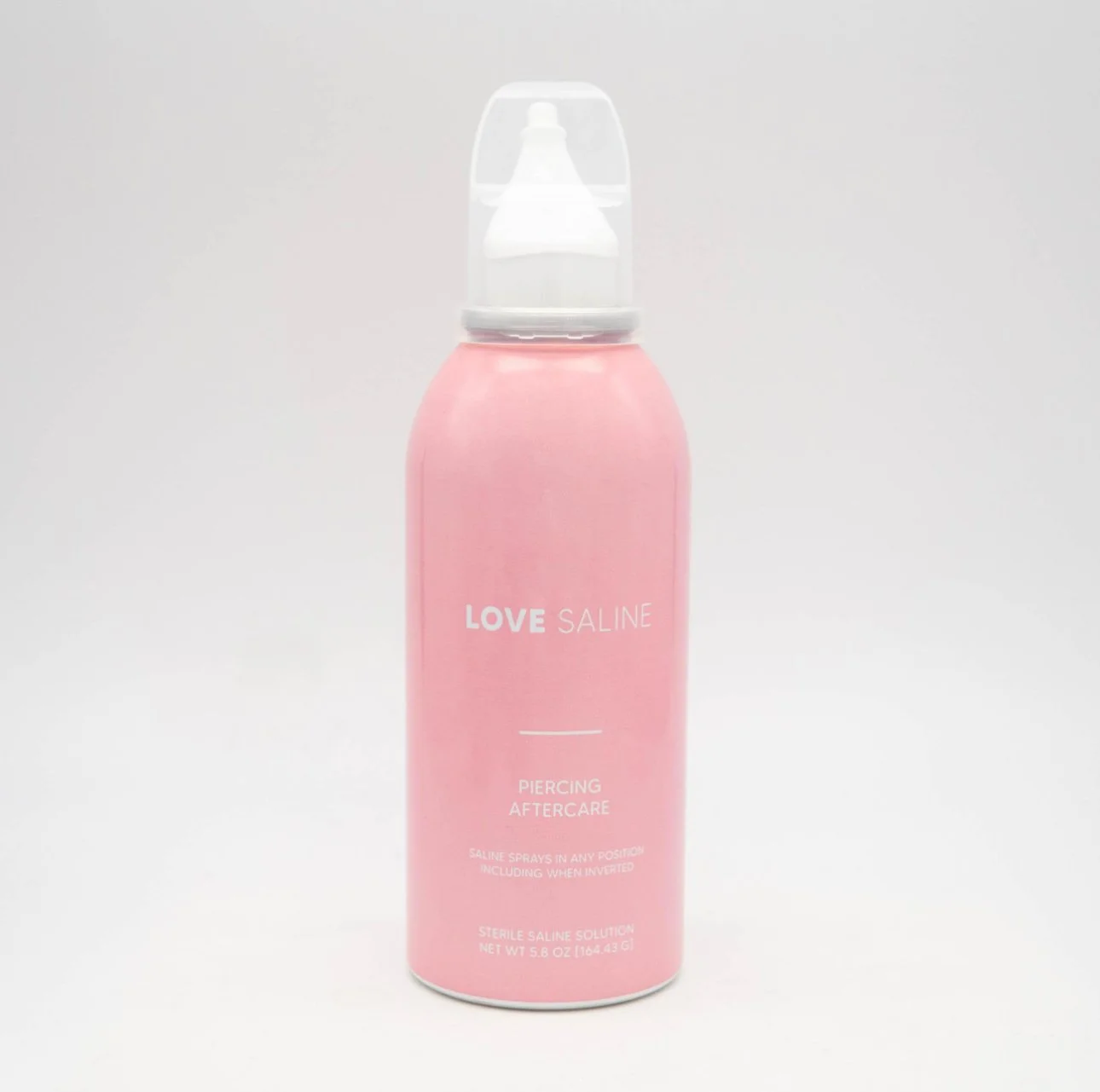Aftercare
Ensure Proper Healing with Our Expert Tips
Aftercare Instructions
Cleaning is recommended daily to avoid excessive buildup from harming your piercing or causing irritation.
The healing process can differ depending on where the piercing is placed. You can find more detailed instructions on the different piercing placements we offer down below:
-
Cleaning: Spray saline front and back of piercing, let saline sit for a few minutes and rinse with water. No need to twist or turn the jewelry. avoid Q-tips and cotton balls.
Heal Time: 6+ months
Downsize: 6-8 weeks
-
Cleaning: Spray saline front and back of piercing, let saline sit for a few minutes and rinse with water. No need to twist or turn the jewelry. avoid Q-tips and cotton balls.
Heal Time: 9+ months
Downsize: 6-8 weeks
Care: Be extra cautious as cartilage piercings are more prone to bumps and irritation.
-
Cleaning: Spray saline on top of piercing, let saline sit for a few minutes and rinse with water. No need to twist or turn the jewelry. avoid Q-tip and cotton balls.
Heal Time: 9+ months
Downsize: 6-8 weeks
Care: Avoid makeup, moisturizers, oils and ointments directly on top of piercing.
Warning: Be extra cautious as cartilage piercings are more prone to bumps and irritation.
-
Cleaning: Spray saline on piercing, let saline sit for a few minutes and rinse with water. No need to move the jewelry. avoid Q-tips and cotton balls.
Heal Time: 6+ months
Downsize: 6-8 weeks
Care: Avoid makeup, moisturizers, oils, and ointments directly on top of piercing.
Warning: Ensure your bedding and pillowcases are clean for all facial piercings. You can always use the t-shirt method and slip your pillow into a large, clean tee. That way, you can get up to four clean surfaces for sleeping by rotating the pillow and turning the shirt inside out.
-
Cleaning: Spray saline on piercing, let saline sit for a few minutes and rinse with water. No need to move the jewelry. avoid Q-tips and cotton balls.
Heal Time: 6+ months
Care: Avoiding waist high or compression clothing while sleeping is recommended. Try sleeping on your back to avoid extra pressure on the piercing.
Recommended Aftercare Products
The number one product we recommend when caring for your piercing is a sterile saline solution like Love Saline. Simply spray the saline onto the piercing (front and back or top) and let it sit for five minutes, then rinse thoroughly. Doing this before a shower is a great way to ensure it gets rinsed properly. It’s as easy as that!
Common Issues and Solutions
Despite your best efforts, sometimes issues can arise during the healing process. Here are some common problems and practical solutions to help you navigate any challenges with your new piercing.
-
Symptoms:
Redness
Swelling
Fever
Heat around the piercing site
Pain or tenderness
Yellow or green discharge
Solutions:
Clean Gently: Continue cleaning with a saline solution once a day.
Avoid Irritants: Keep the area free from makeup, lotions, and other potential irritants.
Seek Professional Help: If symptoms persist for more than a few days or worsen, consult your piercer or a healthcare professional immediately.
-
Symptoms:
A small bump near the piercing site
It may be filled with fluid or firm to the touch
Red and inflamed
It may be tender, burn, or itch - however, some are painless
Solutions:
Avoid Pressure: Ensure your jewelry is not too tight and avoid sleeping on the piercing.
Consult Your Piercer: If the bump does not improve or worsens, consult your piercer for further advice.
Care: Be extra cautious as cartilage piercings are more prone to bumps and infections.
-
Symptoms:
The piercing moves from its original position
The skin between the entrance is flaking or peeling, red or inflamed, and/or hard and colloused.
There is ¼’ of tissue or less between the openings
Solutions:
Remove Jewelry: If you suspect rejection, visit your piercer to have the jewelry removed to minimize scarring.
Choose Appropriate Jewelry: Ensure you’re using high-quality, implant-grade jewelry suitable for the piercing.
Monitor Healing: Keep an eye on your piercing, and if it continues to move, consult your piercer for alternatives.
-
Symptoms:
Redness and itching around the piercing site
Rash or hives
Solutions:
Switch Jewelry: Opt for hypoallergenic, implant-grade materials like titanium or niobium.
Consult Your Piercer: Have your piercer help with changing the jewelry to minimize irritation.
-
Symptoms:
Swelling around the piercing site
Tight feeling around the jewelry
Solutions:
Avoid Irritants: Stay away from spicy foods, alcohol, and hot beverages for oral piercings.
Consult Your Piercer: If swelling persists or worsens, consult your piercer for advice.
-
Symptoms:
Prolonged bleeding from the piercing site
Solutions:
Apply Pressure: Use a clean cloth or sterile gauze to apply gentle pressure to the area.
Elevate the Area: If possible, elevate the pierced area to reduce blood flow.
Seek Professional Help: If bleeding does not stop, seek medical attention.
-
Symptoms:
Dry skin around the piercing
Crust formation
Solutions:
Saline Solution: Continue cleaning with a saline solution once per day, which can help remove crusts.
Avoid Over-Cleaning: Over-cleaning can cause dryness, so stick to cleaning twice a day.
-
Symptoms:
Prolonged healing time
Persistent pain or discomfort
Solutions:
Follow Aftercare Instructions: Ensure you are following all aftercare instructions meticulously.
Consult Your Piercer: If healing complications persist, consult your piercer for a thorough assessment.
-
Symptoms:
Severe redness, swelling, or pain
A large amount of thick, green, yellow, or gray discharge
Unpleasant scent
Red streaks near the piercing site
Notice symptoms are lasting for a week or more
Experiencing fever, chills, nausea, vomiting, dizziness, or disorientation
Remember, every piercing heals differently, and what works for one person may not work for another. It's important to listen to your body and reach out to a professional if you have any concerns. At Last Body Piercing is here to support you throughout your healing journey. Don't hesitate to contact us with any questions or issues you may encounter. Your health and satisfaction are our top priorities.
Need more help with aftercare?
Get in touch with us!
Ready to get pierced?
Book your appointment today!



